Prevent foul odors and clogged pipes from making your mobile home unlivable. Knowing how your mobile home’s plumbing works and how to unclog it will help you keep your home fresh and safe.
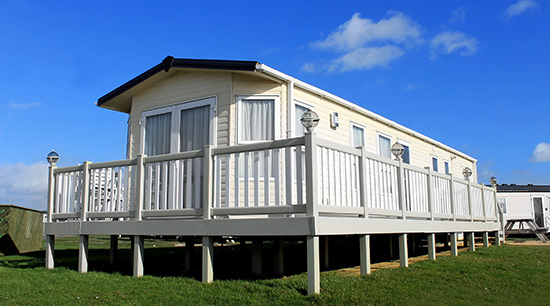
alpharettawaterdamageremoval.com assembled the following information and tips on how to unclog mobile home pipes, how this type of plumbing is configured, and offers some valuable tips on preventing future clogs.
Mobile Home Plumbing Problems
While mobile home living can be both convenient and exciting, attention must be given to its plumbing system. Mobile home plumbing is different from house plumbing and has a higher frequency of clogging issues. To unclog your mobile home pipes, you will need the following tools and supplies:
- Pliers
- A Wire Hanger
- Plumbing Wrench
- A Plunger
- A Drain Snake
- Dish Detergent
- A 50/50 Mix of Vinegar and Baking Soda
- A Bucket
- Cleaning (Sanitizing) Products
- Protective eyewear, gloves, and clothing
Tip: Be prepared for clogs by keeping your plumbing tools and supplies together in a toolbox or bucket. The faster you can resolve a clog in your mobile home plumbing, the less likely you will have to clean up contaminated water.
How To Unclog a Mobile Home’s Toilet
Toilet engineering and mechanisms are virtually the same whether in a mobile home or a brick-and-mortar house. For this and all work on your plumbing system, use protective eyewear, gloves, and clothing. Here’s how to unclog the toilet in a mobile home:
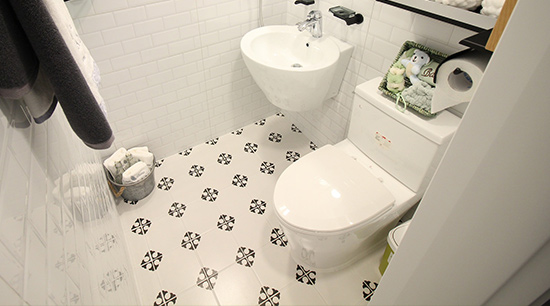
Shut Off the Water Source – You want to avoid toilet water overflowing, especially when it contains urine or feces. Contact with this water or surfaces it contaminates can result in infection or illness.
Plunge the Toilet – Follow these steps to get the best performance from your plunger:
- Soak your plunger in hot water (this increases the bell’s elasticity and prevents cracking).
- Add hot water to the toilet bowl (if water already fills more than half of the bowl, do not add any more to it).
- Add about half a cup of dish detergent to the water and let it settle near the exit hole (this loosens the clog).
- Submerge the plunger bell in the toilet water (place it so a seal is formed around the exit hole).
- Vigorously pump the plunger in an up & down motion until you see or feel the water level descending in the bowl (repeat this step as needed to clear the clog and get the water flowing freely).
Tip: When the water goes down in the bowl, add hot water and carefully repeat steps 4 & 5 to make sure that the clog has completely cleared from your plumbing system.
Note: Shake out and rinse your plunger off before disinfecting it and putting it away.
If you do not have a plunger, visit alpharettawaterdamageremoval.com/how-to-fix-a-clogged-toilet-without-a-plunger/ for alternative ways to clear a clog from your toilet.
Wire Hanger – For clogs that remain trapped near the toilet’s exit hole, you can potentially fish them out with a wire hanger. Here’s how:
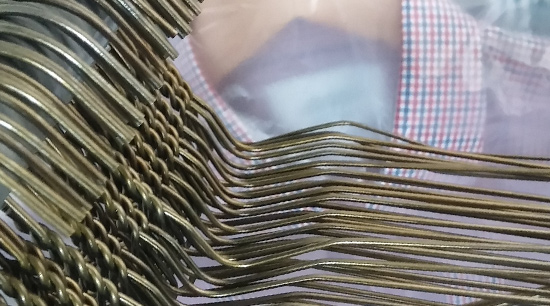
- Use your pliers to unravel the hanger’s hook, then straighten out the entire hanger.
- On one end, make a sharp bend of about 1/2 inch (should form a hook at the end of the hanger like a fishhook).
- Insert the newly fashioned hook into the toilet’s exit hole until you feel resistance from the clog.
- Push the hanger into, through, and around the clog to loosen or break it up.
- Flush repeatedly to ensure that the clog has cleared the plumbing system.
Tip: If you can easily reach the obstruction, use the hook to snag it and pull it back into the bowl.
Drain/Plumber’s Snake – Sometimes, even the best plunging efforts fail to budge a deep, stubborn clog. When this occurs, use your plumber’s snake:
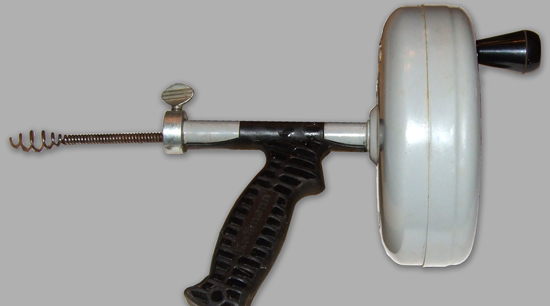
- Drop the coiled end of the snake into the exit hole.
- Extend the snake until you reach the clog (you’ll feel the resistance).
- Rotate the snake clockwise until you feel the resistance give way (any water in the bowl should descend as the clog moves down the plumbing system).
- Using a bucket of hot water, pour the water into the bowl. The water will flow down the toilet if the clog has been cleared.
- If your first attempt did not clear the clog, try again.
Tip: If you were unable to clear the clog after several attempts with the snake, call a plumber to prevent damaging the toilet or your plumbing.
Note: One of the only differences between a mobile home toilet and a house toilet is how the toilet is anchored to the floor. In a house, the toilet is screwed or bolted into the home’s foundation or an immobile surface. The floor in a mobile home is highly susceptible to shifting and movement. This can loosen the floor screws leaving the toilet wobbly and can damage the plumbing seal.
For health and safety reasons, rinse off and disinfect all tools and items used to clear a toilet clog. Toilet water is considered category 2 or category 3 water and may cause illness from contact. Read more about water categories and the dangers they can pose at alpharettawaterdamageremoval.com/types-of-water-damage/
How To Unclog a Mobile Home’s Sink or Shower Drain
You can Remove clogs from mobile home sink and shower drains fairly easily. Consider the following methods:
Plunge The Drain – For this method, you will need one to two inches of water in the tub or sink basin to create a seal between the plunger and the drain. Then:
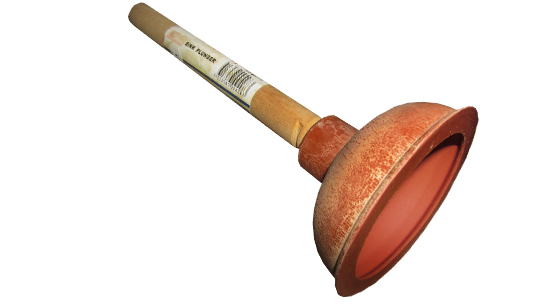
- Soak your plunger in hot water (this increases the bell’s elasticity and prevents cracking).
- Add about half a cup of dish detergent to the water and let it settle in the drain (this works to loosen the clog).
- Submerge the plunger bell in the water, centered over the drain (place it so a seal is formed between the plunger and the drain).
- Vigorously pump the plunger in an up & down motion until you see or feel the water level descending (repeat this step as needed to clear the clog and get the water flowing freely).
Tip: If your sink or shower basin has an overflow opening, make sure it is closed or plugged.
Pour Boiling Water into the Drain – Many clogged drains can be cleared using boiling water. Here’s how to do it:
- Remove standing water in the sink or tub.
- Bring two large pots of water to a rolling boil.
- Carefully pour one pot of boiling water down the clogged drain.
- Test the drain by running hot water down the drain for 30 seconds to 1 minute.
- (If cleared) Pour the second pot of boiling water down the drain.
If your attempt to clear the clog fails, repeat steps 1-4 as needed.
Tip: Add 1/2 cup of salt to the first pot of boiling water (let it dissolve). Salt is handy in dissolving or dislodging drain clogs.
Note: This method is not recommended on PVC pipes. PVC pipe connections and joints may loosen when exposed to such extreme heat.
Baking Soda and Vinegar – Vinegar and baking soda can be used instead of store-bought drain cleaners that use potentially dangerous chemicals. Depending on the clog’s type, size, and depth, this natural mixture often out-performs brand-name drain cleaners. Here’s what to do:
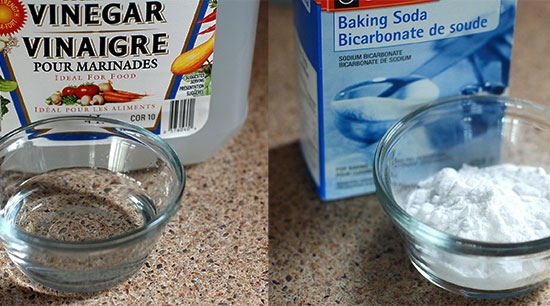
- Remove standing water in the sink or tub.
- Pour 1 cup of baking soda straight down the drain.
- Pour 1 cup of white distilled vinegar down the drain behind the baking soda.
- Let the baking soda and vinegar mixture rest for 1 hour.
- Pour one pot of boiling or hot water down the drain to rinse it out.
Note: If there’s no change, the clog is probably further down the drainpipes and will require another removal method.
Remove and Clean the P-trap – For a kitchen or bathroom sink, take advantage of working on the plumbing and clean your P-trap (the clog might be in the P-trap). The P-trap is located under your sink below the drain.
- Place a bucket under the trap and unfasten it or loosen the large nuts with a plumbing wrench.
- With the trap removed, clean it out or remove the clog from the adjacent pipe.
- Reconnect the trap and run hot water to check the plumbing.
Tip: Always try this method before running a plumber’s snake into your sink’s drain.
Drain/Plumber’s Snake – The last step on clogged sink and shower drains should be to use a plumber’s snake. Here’s what to do:
- Push the end of the snake into the drain and keep lowering it further down (if your drain has a debris protector, carefully thread the snake through it).
- Keep pushing the snake down the drain until you feel resistance.
- Rotate the snake clockwise until you feel the resistance break up (the snake should then freely move downward).
- Carefully pull the snake out and pour hot water down the drain to test it.
Note: If your snake does not clear the clog from your drain, call a plumber to prevent damaging your mobile home’s plumbing.
What Causes Clogging in Mobile Home Plumbing?
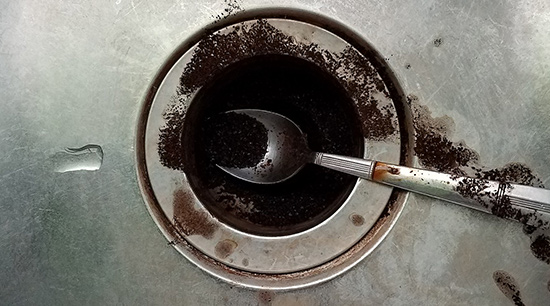
Most mobile homes (unless custom built) have smaller diameter pipes used for the plumbing system. Clogging occurs for many of the same reasons you find in brick and mortar homes, just faster or more easily in mobile homes. Here are some of the common clogging causes in mobile home plumbing systems:
- Hair
- Soap Lather
- Grease and Fat
- Dental Floss
- Cotton Swabs
- Feminine Hygiene Products
- Diapers
- Wipes
Note: In some mobile homes, even toilet paper can clog up the plumbing. Use a wastebasket for all paper or semi-solid products and place hair straining drain protectors in the shower and bathroom sink drains.
Tip: Keep a masonry jar by your stove or sink to collect grease. Keeping this out or your sink drain will help keep your plumbing flowing. The same goes for food debris, coffee grounds, etc. collect and throw it away to prevent buildup and eventual blockages.
How Is the Plumbing Different in a Mobile Home?
Plumbing differences between a house and a mobile home begin with the positioning of the pipes:
In a House – The plumbing runs through the walls to and from the various fixtures.
In a Mobile Home – The plumbing runs under the floors, not inside the walls. Then to the fixtures.
Mobile home plumbing has the benefit of accessibility, making it easier for repairs, adjustments, and replacements.
A downside is that mobile home plumbing is often smaller in diameter and clogs more easily.
Tip: You can dramatically reduce the potential for all plumbing system clogs by periodically cleaning your drains and pipes using the vinegar and baking soda mixture.
- Pour it in
- Let it sit for an hour or two
- Rinse it out
Repeat this on a monthly or bimonthly schedule for all of your fixtures with drains.
How Do I Know When the Plumbing Vent Is Clogged?
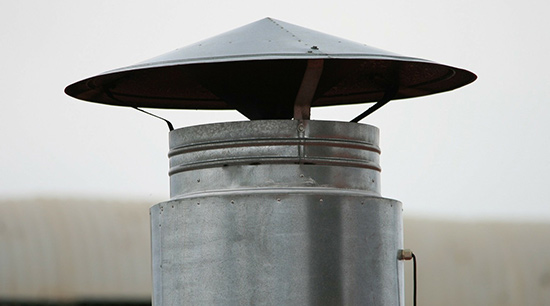
Plumbing ventilation pipes work in tandem with drain pipes to maintain neutral air pressure. Gravity then carries water and sewage through the drain pipes. However, when they are clogged, here is what can happen:
- Bubbling or gurgling sounds when water drains from fixtures
- Drainage slows down (this could also indicate the formation of a clog
- A sewage-like smell will emanate from the toilet or drains
While it is recommended for a professional plumber to clear a clogged vent pipe, here’s how you can do it:
- Carefully climb to the roof and secure yourself near the vent pipe.
- Clear any debris, bird nests, or blockages from around the pipe.
- Use a flashlight to see down the vent pipe (looking for further blockages you can reach).
- If you can’t reach a blockage, clear it with a plumber’s snake (down the vent pipe).
Tip: To fully clear your vent pipe, feed the end of a garden hose down the vent and have an assistant on the ground turn on the water. Listen for water backing up and a sudden whoosh from the drainage of the water as the weight of the water pushes any clog down the drain.
Unclogging Pipes in a Mobile Home
In this article, you discovered how to unclog mobile home plumbing, how it is configured, and how you can prevent future clogs.
Knowing how to unclog your mobile home’s plumbing will help you keep your home clean and safe from dangerous overflows and contaminations.
Your inability to clear the plumbing in your mobile home could leave you frequently cleaning up wastewater, hiring expensive plumbers, and dealing with severe health threats from pathogens found in your wastewater.
Sources:
ufdcimages.uflib.ufl.edu/IR/00/00/13/19/00001/FY80700.pdf
citeseerx.ist.psu.edu/viewdoc/download?doi=10.1.1.368.3168&rep=rep1&type=pdf
hadley.edu/sites/default/files/2020-08/Cleaning_UncloggingToiletsDrains_HO_081020.pdf
(678) 505-0266